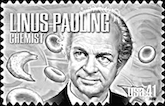| IMPORTANT: This page is for educational purposes only. It is not in any way offered as prescription, diagnosis nor treatment for any disease, illness, infirmity or physical condition. Any form of self-treatment or alternative health program necessarily must involve an individual’s acceptance of some risk, and no one should assume otherwise. Persons needing medical care should obtain it from a physician. Consult your doctor before making any health decision. |

Dr. Robert F. Cathcart III M.D. Los Altos, California – 1932 – 2007
2008 Orthomolecular Hall of Fame Inductee Orthopedic surgeon Dr Robert Cathcart MD successfully treated over 30,000 patients in over 3 decades, sometimes administering over 150,000 mg per day.
Dr Cathcart’s wrote the oral protocol for vitamin C, “Titrating to Bowel Tolerance“, which explains how to fine tune vitamin C dosage for optimal maintenance, as well as treatment for acute conditions of illness, stress or injury.
Preparation of Sodium Ascorbate for IV and IM Use
(For physicians only)
ALLERGY, ENVIRONMENTAL & ORTHOMOLECULAR MEDICINE
Note: the following are excerpts from letters sent to physicians on
the subject of IVC.
If one does not want to make their sodium ascorbate stock solutions
from scratch like I recommend (and I can well understand why you
might not): You can order from
Merit Pharmaceuticals, 2611 San Fernando, Los Angeles, CA 90065, For CA 800-696-3748 Out-of State 800-421-9657
The Stock Bottle of Sodium Ascorbate
Sterilize a 500 cc IV bottle along with a funnel, the rubber stopper,
and a spoon. Then fill the bottle to the 300 cc line with sodium
ascorbate powder (from Bronson Pharmaceutical, 800-610-4848) (I weighed
the sodium ascorbate out one time and 250 gm came up to the 300 cc line.)
Then add 1/3 of the 20 ml bottle (6.6 cc) of edetate disodium injection,
USP 150 mg/ml. Then add water for injection q.s. 500 cc. Shake up the
bottle and if there is 1 mm of crystals left on the bottom, add 1 mm of
water to the top. It turns out that sodium ascorbate is soluble to almost
exactly a 50% concentration at room temperature. I do not worry about the
sterility of this because this is very bacteriocidal. Perhaps it should
be filtered to get out particulate matter but I have never seen this to be
a problem. The pH of this has always turned out to be 7.4. My nurse
discovered recently that if you do not shake the mixture to make it go
into solution until after you refrigerate it and are ready to use it that
the solution is less yellow. I presume that this is good because sodium
ascorbate is clear and dehydroascorbate is yellow. The made up solutions
are always a little yellow but refrigeration before mixing results in a
far less yellow mixture.
Preparation of the IV Bottle
I recommend that the above stock bottle solution be added to
lactated Ringer’s such that 30 Gms (60 cc) to 60 Gms (120 cc) this
be added to a quantity of lactated Ringer’s sufficient to make 500
cc of the final solution to be injected IV. I had been using water
for injection some time ago because this solution is several times
hypertonic already and I did not want to add more tonicity.
However, recently I have found that lactated Ringer’s feels better
to patients so I use that for the final dilution (not the stock
solution described above.)
IM Injections
IM injection material for infants is made from the stock
solution diluted 50% in water giving a 25% solution. Generally,
the size of the injection can be 2 cc in each buttocks. Ice may be
applied if it hurts to much. This may be given every hour or so,
frequently enough to bring the fever or other symptoms of excessive
free radicals down rapidly.
General Comments
I have not had any trouble with these solutions. I hear all
sorts of weird stories from patients who have gotten ascorbate
elsewhere. I do not know if it is an acid problem (because
ascorbic acid was used rather than sodium ascorbate) or whether
some colleges get carried away with what other things they add to
the intravenous solutions.
I think that there may be, at times minor troubles with
commercially prepared solutions because of the following. I
understand that the U. S. Pharmacopeia specifies that the solutions
be made from ascorbic acid and then buffered with sodium hydroxide
or sodium bicarbonate to a pH between 3.5 and 7.0. I worry that 60
grams of ascorbate at a pH of 3.5 is too acid. I know that Klenner
(the first physician who used high dose intravenous ascorbate by
vein) also made his solutions from sodium ascorbate powder.
I watch patients for hypocalcemia (although I have not seen
it), hypoglycemia (I encourage patients to eat while taking the
IV), and dehydration (I encourage water and slow the IV down.) I
also see headaches afterward but not so much since I have been
emphasizing the continuing high doses of oral ascorbic acid as soon
as the IV is over. Actually I give oral ascorbic acid while the IV
is going to get a double effect. Bowel tolerance goes up while the
IV is running but one has to be careful to stop giving oral C about
an hour before the IV stops or else you may get diarrhea as soon as
the IV stops. The oral ascorbic acid is then started again 1/2 to
1 hour after the IVC stops.
IMPORTANT: Information provided is intended for educational purposes and is not intended to be medical advice nor offered as a prescription, diagnosis or treatment for any disease, illness, infirmity or physical condition. Always consult your own medical provider about your health and medical questions before making any health related decision. These statements have not been evaluated by the Food & Drug Administration.
